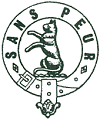Introduced in 1906 these rifles were an attempt by the War Office to provide Cadets and Rifle Clubs with a rifle resembling the current service rifle (the SMLE) in proportional dimensions and form of sighting.
The rear sights resemble the SMLE with screw windage adjustment and slide elevation adjustment. Also rear sight protector ears were fitted, although for reasons unknown they were fitted looking like SMLE sight protectors and in the reverse. Mine wears the reverse model.
Unfortunately they were outshot by the competition (mainly Martinis) and not very popular. Although not used in the British army examples have been noted I Australia with D^D and RAN markings. They were manufactured by BSA and LSA, with BSA producing the No 2 Miniature Rifle in a “Cadet & Scout Pattern” at the same time – a very similar rifle but with longer fore end and simpler sights.
There were single shot and magazine versions produced by both BSA and LSA. Versions with a longer fore end were also offered. Manufacture was from 1906 to 1910 for LSA and 1906 to probably 1915 for BSA (information on numbers and years produced appears sketchy). Serial numbers up to 21,000 have been observed. The serial number of mine suggests it manufactured in 1909.
The bolt was produced I three versions – firstly with a single claw extractor, then with a hood for the extractor (mine) and finally with a double claw extractor. The bolt head is non rotating and the bottom of the receiver channel appears to be machined to act as an ejector.
The butt plate strongly resembles the SMLE and includes a trap for cleaning equipment. This rifle came with a smaller version of the SMLE pull through but no oiler. I have utilised an oiler manufactured by GSR (South African in origin I believe) as it is significantly shorter than the standard SMLE oiler.
An interesting feature of the WOP Trainer is the integral flip over front sight protector. Ambidextrous in operation its only drawback is when you forget to flip it to one side or the other and end up trying to sight with it instead of the front blade.
Although BSA offered a Deluxe model with checkering I feel mine has had the checkering added after purchase. The few pictures I have seen of the Deluxe model show a higher grade than that on mine.
The standard BSA marking is on the left side of the butt. The right side shows some nice figure in the wood.
All in all a nice little rifle for plinking but I wouldn’t use it for serious target work (that’s what the No8 is for). The littlest feral princes used and preferred it as she found the No8 and No2 MkIV* a little heavy. It gets an occasional run to the range when I’m in the mood for fun rather than serious shooting. One website I perused tells me that Admiral Lord Cunningham (C-in-C Mediterranean Fleet in WW2) owned one. Bet it was the Deluxe model. One point of interest about this rifle that usually escapes attention is that it was not a proprietary design (as were the Snider, Martini, Enfield etc) but a government design that was then built under contract. Whilst researching this I found a reference that the Local Defence Force (Republic of Ireland) in 1941 was short of rifles for shooting practice and made up the shortfall “by use of the 0.22 miniature rifle” – so maybe they soldiered on a bit.



